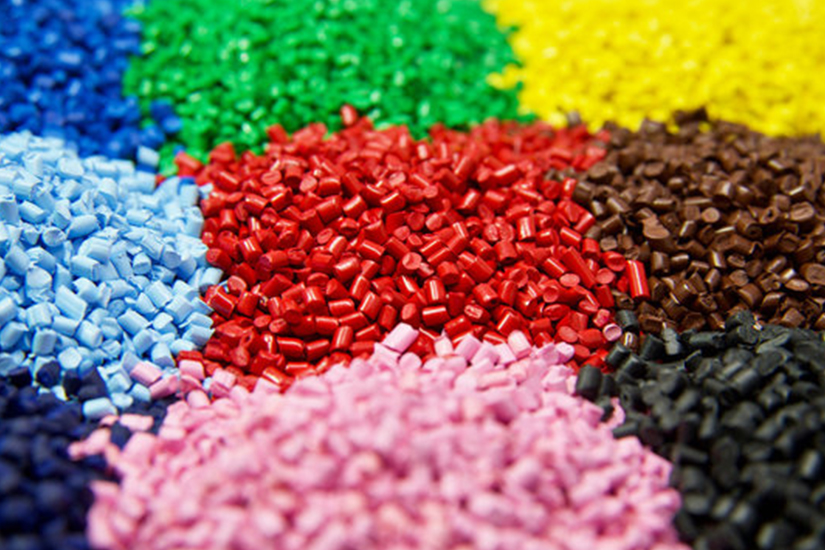
Plastics Granules
About Divine ascent International
Leader in Polymer Product
Divine Ascent is the name well known for its Polymers trading business in India. We trade in premium quality polymers like Plastic Raw material which primarily includes, PE (Polyethylene), PP (Polypropylene), PVC Polymer (Poly Vinyl Chloride), Biodegradable Polymer, EVA (Ethylene Vinyl Acetate), Engineered Polymer.
Divine Ascent International are professionally managed company which was established in 2016 as a Trading House of Polymers and PVC Granules Products. Divine Ascent using his cutting edge expertise and decades of experience has steered the company on the path of growth thereby capturing the niche markets and having extensive presence in Global as well as Indian Markets. Our biggest assets are our Team of dedicated and qualified professionals committed to excellence and continuous improvement. Our management offers years of experience and a commitment to the philosophy that we all report to our customer whose needs and direction will lead us to continued success.
It’s normally use in different products making such as Bottles, Flooring, Injection Moulding Pipe Fittings, BOPP films, Food Packaging, Housewares, Protective Clothes, Bags & Pouches, Blown Film, Food Packaging Film, Engineering product, Electrical Product and More…
- PVC Granules…
- Polypropylene.
- Polyethylene.
- Engineering Polymer.
- EVA.
- Biodegradable Polymer.
1. PVC (Polyvinyl chloride)
Polyvinyl chloride (PVC) is the world’s third-most widely produced synthetic plastic polymer. About 40 million tons of PVC are produced each year.
PVC comes in two basic forms: rigid and flexible. The rigid form of PVC is used in construction for pipe and in profile applications such as doors and windows. It is also used in making bottles, non-food packaging, food-covering sheets, and cards. It can be made softer and more flexible by the addition of plasticizers, the most widely used being phthalates. In this form, it is also used in plumbing, electrical cable insulation, imitation leather, flooring, signage, phonograph records, inflatable products, and many applications where it replaces rubber. With cotton or linen, it is used in the production of canvas.
WE SUPPLY BELOW PVC POLYMER GRADES MATERIAL
- K-57
- K -67
2. Polypropylene Polymer
Polypropylene (PP) Is the Most Versatile Polymer Available Today And Has Got the Excellent Physical Properties. This PP Granules And Resin Is Used In Making A Broad Range Of Plastic Products Due To Its Unmatched Physical, Chemical, Thermal, And Electrical Properties.
PP film (PP TQ)
PP film is recommended for use in TQ (Tubular Water Quench) Film. It contains slip and antiblock additives. Repol H100EY is an ideal material to use in textile over wraps, packaging of readymade garments, snack food, grocery and general purpose packaging
PP injection
PP injection is an ideal choice for moulding rigid containers, thermowares and housewares. It is also suitable as a compounding base and blending material in furniture compound. PP injection moulding contains antistat agent that reduces static charge build-up in products.
PP lamination
PP lamination grade is recommended for use in compact Fibre Spinning operations, for making fine denier multifilament yarns and non-wovens.Repol H350FG has excellent uniformity needed for high speed spinning of fine deniers. Repol H350FG contains an excellent process stabilizer package suitable for non-woven and filament products. Formulated for gas fading resistance.
PP raffia
PP raffia is recommended for use in compact Fibre Spinning operations, for making fine denier multifilament yarns and non-wovens.Repol H350FG has excellent uniformity needed for high speed spinning of fine deniers. PP raffia contains an excellent process stabilizer package suitable for non-woven and filament products. Formulated for gas fading resistance.
PP thermoforming
PP Thermoforming is a special nucleated polypropylene homopolymerintended for thermoforming packaging
PPCP
PPCP is recommended for use in Injection Molding processes where medium impact strength is required. It is an ideal material to use in housewares, thermos-wares, sanitary wares, furniture, industrial and automotive components. Repol B120MA contains antistatic agent that reduces static charge build-up in products.
PPRCP
Polypropylene random copolymers are thermoplastic resins produced through the polymerization of propylene, with ethylene or butene bonds introduced in the polymer chain. The resins provide a broad range of characteristics, and are used in a wide range of applications.
3.Polyethylene
We Import & Offering you a Best quality Polyethylene granules. It’s generally used in applications such as Bags & Pouches, Blown Film, Food Packaging Film etc..
4.Engineered Polymer Types
ABS POLYMER
ABS is a terpolymer made by polymerizing styrene and acrylonitrile in the presence of polybutadiene. The proportions can vary from 15% to 35% acrylonitrile, 5% to 30% butadiene and 40% to 60% styrene. The result is a long chain of polybutadiene criss-crossed with shorter chains of poly (styrene-co-acrylonitrile). The nitrile groups from neigh boring chains, being polar, attract each other and bind the chains together, making ABS stronger than pure polystyrene. The acrylonitrile also contributes chemical resistance, fatigue resistance, hardness, and rigidity, while increasing the heat deflection temperature. The styrene gives the plastic a shiny, impervious surface, as well as hardness, rigidity, and improved processing ease. The polybutadiene, a rubbery substance, provides toughness and ductility at low temperatures, at the cost of heat resistance and rigidity. For the majority of applications, ABS can be used between? 20 and 80 C (?4 and 176 F), as its mechanical properties vary with temperature. The properties are created by rubber toughening, where fine particles of elastomer are distributed throughout the rigid matrix.
NYLONE POLYMER
Nylon is a generic designation for a family of synthetic polymers composed of polyamides (repeating units linked by amide links). Nylon is a silk-like thermoplastic, generally made from petroleum that can be melt-processed into fibers, films, or shapes. Nylon polymers can be mixed with a wide variety of additives to achieve many different property variations. Nylon polymers have found significant commercial applications in fabric and fibers (apparel, flooring and rubber reinforcement), in shapes (molded parts for cars, electrical equipment, etc.), and in films (mostly for food packaging).
POLYCARBONATE POLYMER
We importer & supply premium quality Polycarbonate Polymer in India.
PMMA POLYMER
We importer & supply premium quality PMMA Polymer in India.
PBT POLYMER
Providing innovative solutions that save weight and decrease costs along with other benefits, PBT has made its place in end-markets like automotive, consumer goods as well as electrical & electronics. Explore polybutylene terephthalate (PBT) in detail along with its key properties like mechanical, thermal, electrical, etc. and understand what makes it an ideal choice in high-end engineering applications. Also, learn about few polybutylene terephthalate blends with PC, PET and conditions to process this polymer material.
PET POLYMER
One in five PET bottles in the world are made from our resins. We are the leading global Trader of Polyethylene Terephthalate (PET) with 19 PET production plants on four continents in 11 countries. Our PET business is part of our core polyester value chain. The production and sale of PET is primarily used as a raw material in the manufacture of bottles, sheets, films, fibers, filaments and other specialty products.
5.EVA (Ethylene vinyl acetate)
Ethylene-vinyl acetate (EVA), also known as poly (ethylene-vinyl acetate) (PEVA), is the copolymer of ethylene and vinyl acetate. The weight percent of vinyl acetate usually varies from 10 to 40%, with the remainder being ethylene. Broadly speaking, there are three different types of EVA copolymer, which differ in the vinyl acetate (VA) content and the way the materials are used
The EVA copolymer which is based on a low proportion of VA (approximately up to 4%) may be referred to as vinyl acetate modified polyethylene. It is a copolymer and is processed as a thermoplastics material � just like low density polyethylene. It has some of the properties of a low density polyethylene but increased gloss (useful for film), softness and flexibility. The material is generally considered non-toxic.
The EVA copolymer which is based on a medium proportion of VA (approximately 4 to 30%) is referred to as thermoplastic ethylene-vinyl acetate copolymer and is a thermoplastic elastomer material. It is not vulcanized but has some of the properties of a rubber or of plasticized polyvinyl chloride particularly at the higher end of the range. Both filled and unfilled EVA materials have good low temperature properties and are tough. The materials with approximately 11% VA are used as hot melt adhesives.
WE SUPPLY BELOW EVA GRADE MATERIAL
- EVA from SIPCHEM 2518CO
- ELVAX 460
- LG 28025
6.Biodegradable polymers
Biodegradable polymers are a special class of polymer that breaks down after its intended purpose by bacterial decomposition process to result in natural by-products such as gases (CO2, N2), water, biomass, and inorganic salts. These polymers are found both naturally and synthetically made, and largely consist of ester, amide, and ether functional groups. Their properties and breakdown mechanism are determined by their exact structure. These polymers are often synthesized by condensation reactions, ring opening polymerization, and metal catalysts. There are vast examples and applications of biodegradable polymers. Bio-based packaging materials have been introduced as a green alternative in the past decades, among which, edible films have gained more attention due to their environmentally-friendly characteristics, vast variety and availability, non-toxicity, and low cost.
Applications and uses
- Rigid Food Packaging
- Flexible Packaging
- Food Service ware
- Durable Goods
- Non-Woven
- 3D-Printing


